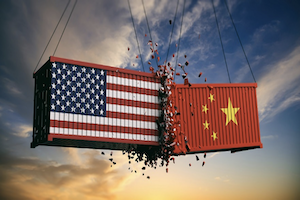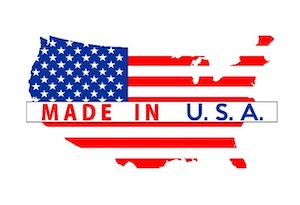Doing Business with China Continues to Get More Difficult for U.S. Companies

The year 2022 saw a substantial increase in export restrictions applicable to China. The U.S. and China are not only in a trade war but there is also an effort by the U.S. to (1) prevent development of supercomputers, semiconductors and related products and technologies, and (2) prevent use of forced labor – especially involving the Uyghur minority in the Xinjiang region.
China and India, A Year Later, Post Invasion, Still Walking the Tightrope With the U.S. as They Continue to Set Records in Trade with Russia

China’s trade with Russia hit a record $190 billion U.S. in 2022, key operative word “record.” China is setting a course to become Russia’s top trade partner and prove to the world just what the “no limits” partnership can produce. An additional “maybe some limits” friend to Russia among the world’s larger economies is India.
Exporting to Mexico

If you are relocating to Mexico, or you are a producer, distributor, seller, etc., and the recipient of your goods is in Mexico because your client, final consumer, manufacturer, distributor, service provider, etc. is there, then, it is more than likely that you will be the exporter or the party responsible for reviewing and preparing some or all of the records needed to ship the goods to Mexico.
Hot (or at least warm) Off the Press: Updates & Revisions to the ITAR

The Directorate of Defense Trade Controls (DDTC) is continuing its project to revise and update the International Traffic in Arms Regulations (ITAR). Some of the changes are editorial and some are substantive. If you are affected by the ITAR or think you might be, you will need to stay on top of the changes because some (or all) may affect you.
Regenerative Finance (ReFi): Tokenizing Carbon Offsets and Incentives

Regenerative Finance (ReFi) is a growing Web3 field that offers an opportunity to rethink how we approach finance, investing, and sustainable economic development. ReFi takes a holistic approach to finance and development, considering the environmental, social, and economic impacts of financial decisions, and aims to create a regenerative economic ecosystem rather than following a primarily extractive approach.
That’s Not ‘Buy America’ Various Origin Requirements in the United States for Importers

You’ve probably heard about the many recent changes to the “Buy America” and procurement rules, starting with Executive Orders in the late 2010’s under then President Trump, several sessions of Congress, and modifications by President Biden. These changes have prompted questions from importers.
New Rules for Customs Brokers – Bringing Your Brokerage into Compliance with the Modernized Part 111

After several years of review by U.S. Customs and Border Protection (“CBP”), the Customs Broker community, and the Commercial Customs Operations Advisory Council, CBP unveiled the new Customs Broker Regulations under 19 C.F.R. Part 111. On October 18, 2022, CBP published the final rules, Modernization of the Customs Broker Regulations, 87 FR 63267, and Elimination […]
Is There Any Hope for Hong Kong to Regain its Special Trade Status with the U.S.? (It’s Officially Hong-China now)

It seems like it was a couple decades ago, but it was only about 5 years that I was last in Hong Kong on business. I was staying at a very nice upscale hotel (plenty to choose from) directly across from a massive port, marveling at the operations that seemed to go 24/7 with the […]
The Multi-Purpose Role of the U.S. Harmonized Tariff Schedule

When goods are imported into the United States, the importer-of-record (IOR) must, with reasonable care, file an entry (CBP Form 3461) and entry summary (CBP Form 7501), or the electronic equivalents, with U.S. Customs and Border Protection (CBP). These documents are the IOR’s preliminary and final declarations about the nature and circumstances of the import transaction, and they tell the story of the transaction through more than forty data elements.
Made in the USA Labeling Rule – What There is to Know About Increased Enforcement Within the Federal Trade Commission

The Federal Trade Commission (“FTC”) has recently begun placing more of an emphasis on Made in the USA (“MUSA”) labeling violations. A MUSA violation occurs when a company labels its product with “Made in the United States” or “USA Made Products,” among other similar phrases, when in fact the country of origin (“COO”) of the […]
